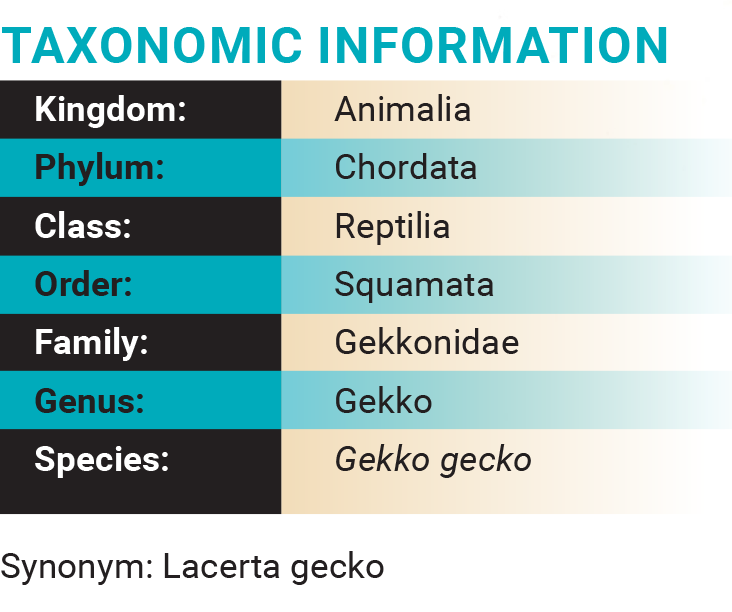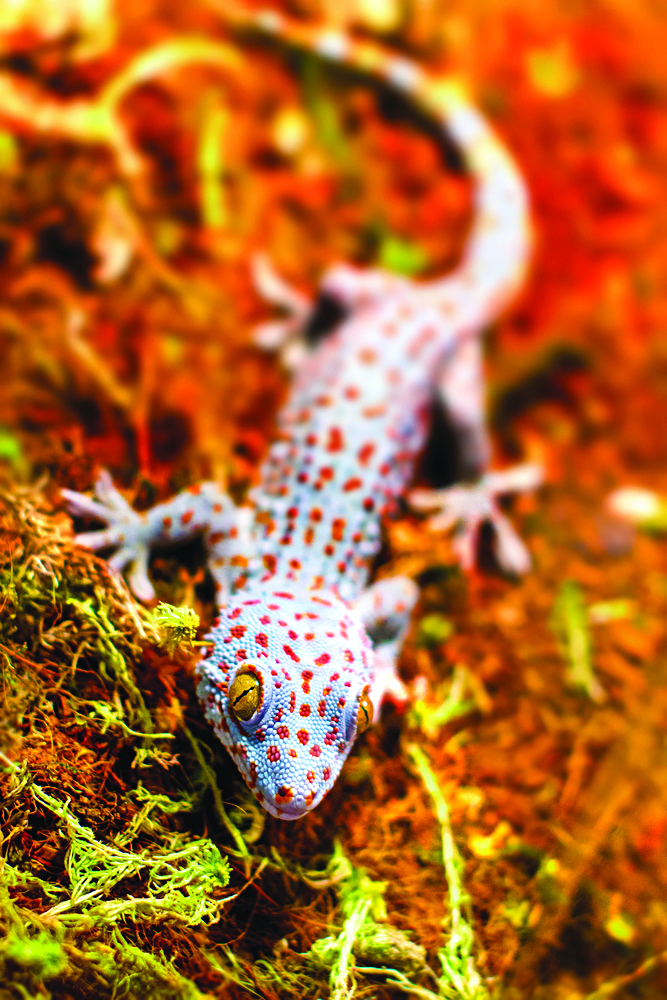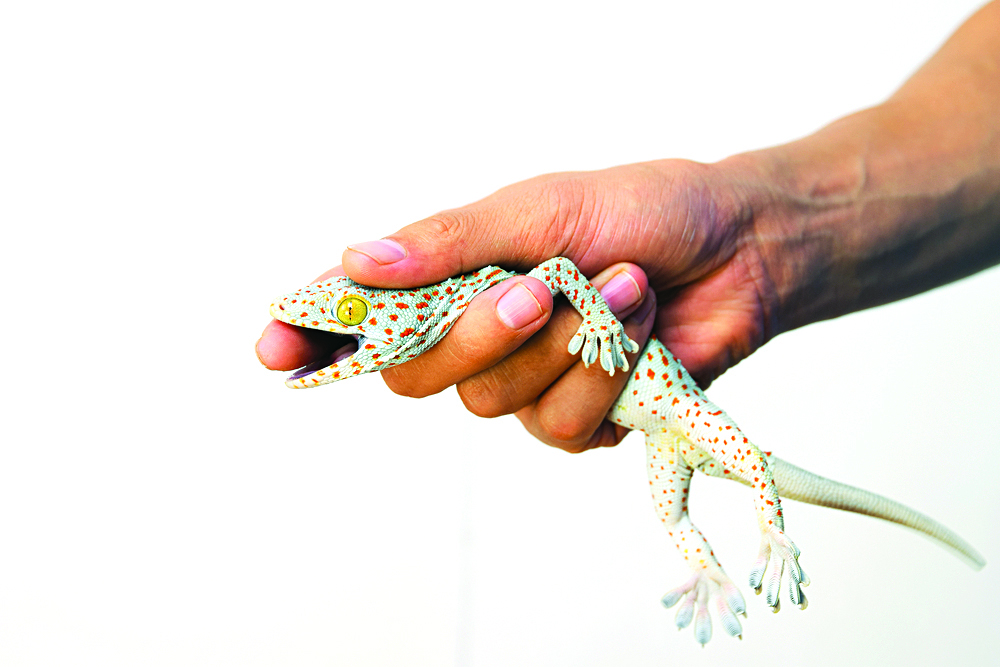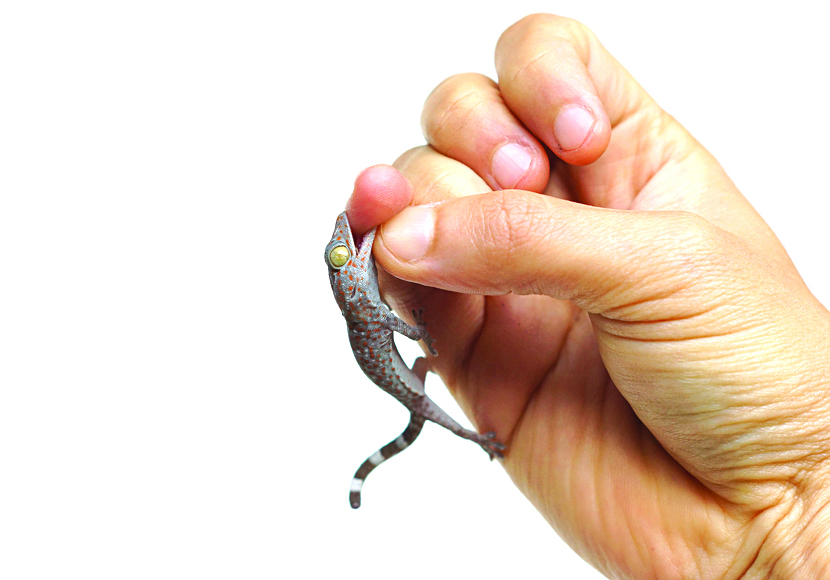Step into the vast landscapes of Asia, and you’re likely to stumble upon an invisible orchestra of critters filling the night air with a rhythmic “Tu-ko, Tu-ko!”
This call, both mysterious and peculiar, belongs to the elusive Tokay Gecko or, as it’s fondly known in the Philippines, the Tuko.

LOUD BUT LOW-KEY

Despite being the vocal virtuoso of the night, the Tuko prefers to stay out of the spotlight. Its days are spent hidden away from human sight, and even after sundown, it shyly avoids well-lit areas.
But don’t be fooled by its low-key lifestyle! When no one is looking, the Tuko takes on the role of an unsung hero, feasting on Cockroaches, Beetles, and even Mice. In short, Tukos are nature’s version of an efficient, eco-friendly pest control service.

MODERN DRAGONS
The Tuko, however, is not just another wallflower in the fauna world. They hold a special place in many East Asian cultures, symbolizing good luck and fertility. Some even regard this creature as a descendant of dragons.
However, this cultural significance has its flip side. The Tuko has been mercilessly hunted and traded, based on unproven claims that consuming them could cure a wide array of ailments, from HIV to cancer. This has caused a rapid decline in their population, pushing them towards becoming a threatened species in the Philippines.
WHY ARE PEOPLE SCARED OF THE TUKO?
Why the fear, you may ask? Well, despite their essential role in maintaining ecological balance, the Tuko has been vilified, primarily due to their robust defensive strategy. When threatened or grabbed, a Tuko can latch onto the offender with an ironclad bite. This sudden aggression, coupled with their nocturnal lifestyle and cryptic habits, has unfortunately painted the Tuko as a creature to be feared rather than respected.



WHAT TO DO IF A TUKO LATCHES ONTO YOU

What should you do if a Tuko decides your finger is the next best thing to a juicy Beetle?
DON’T PANIC
Firstly, remain calm. The Tuko isn’t venomous.
DON’T SCARE THEM FURTHER
It’s crucial to remember that the Tuko is already more scared of you than you are of them. Like any wild animal, they only bite in self-defense.

Screaming, flailing about, or running around can further agitate the Tuko, making it even harder to let them ease up on their grip.
EASY DOES IT
The best course of action is to gently coax them into releasing their grip rather than trying to forcefully pry them off, which could harm both you and the gecko.
LEAVE THEM BE
The easiest way to avoid a Tuko bite is simply to leave them alone. If you see one on your property, appreciate them from a distance and let them go about their business undisturbed.
RESPECT FOR THE NIGHT DWELLER
The story of the Tuko teaches us a profound lesson about our relationship with nature. It’s a creature who has been both revered and feared, seen as a symbol of good luck and yet hunted for their unproven medicinal properties. Their tale is a stark reminder of the fine balance that must be maintained between cultural beliefs and ecological conservation.
In the grand scheme of things, we are just visitors in the Tuko’s world, and like any good guest, we should show respect for our hosts. So, the next time you hear the cryptic “Tu-ko, Tu-ko!” ringing out in the night, take a moment to appreciate the tiny, unseen enigma who’s busy keeping your surroundings safe by munching on animals who might bother you.
Here’s to the Tokay Gecko, the elusive, misunderstood, and ultimately essential dweller of the night.







